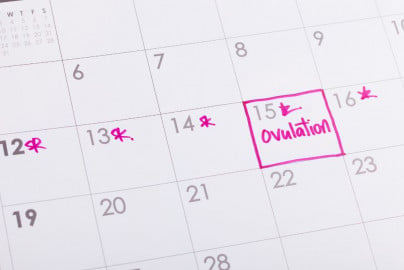Blog

What Is Natural Family Planning and Is it Right For Me?
Natural Family Planning (NFP), also known as fertility awareness, is the practice of tracking one’s ovulation and fertility signs to either plan or avoid pregnancy. NFP is a great option for women who have religious restrictions against contraception, or for those who desire a hormone-free approach to birth control.
If performed correctly, NFP can be extremely effective, however without other contraceptive methods, you will not be protected against STIs / STDs.
There are 3 different ways to approach natural family planning:
- tracking your menstrual cycle and ovulation window
- recording basal temperature
- checking cervical secretions
It is typically best practice to use a combination of these methods to gauge your fertility more accurately. If you need support keeping track of your fertility indicators, there are certain apps and charts that can help you stay organized.
Tracking Your Menstrual Cycle
Your menstrual cycle starts the day you get your period and lasts until your next period, which is typically 28 days later (a cycle between 22-35 days is also normal). Around days 14-16 of your cycle, an egg is released from the ovaries and lasts 24 hours in the fallopian tubes. Sperm can last 5 days in a woman’s body, meaning conception can result from unprotected sex that occurs either before or after ovulation. Since it is difficult to know the exact day of ovulation, it is recommended to have intercourse multiple times during the ovulation window if you are planning for pregnancy. If you are looking to avoid conception, it is best to abstain from sex or use contraceptive methods during those days of your cycle. You may also want to budget a few extra days to either have or not have sex, as ovulation patterns can fluctuate based on lifestyle, stress, and other hormone changes.
Recording Basal Body Temperature
In addition to tracking your cycle, you can keep a daily record of your basal body temperature, which is the temperature of your body when you are completely at rest. If you are to use this method, it is recommended that you track your temperature for at least 3 menstrual cycles to find a pattern. You will need a special basal thermometer or one that has two decimals places of a degree. Your basal temperature should be recorded from the same place (mouth or rectum) and same time every morning. For most, typical basal temperatures are around 96 to 98 F and can rise as little as 0.4 F after ovulation. Because it only rises a small amount, it is important to track your temperature for some time to help you recognize when that increase happens for you.
Monitoring Cervical Secretion
Cervical mucus changes throughout the menstrual cycle. For the first few days after your period, the vagina is typically dry. However, leading up to ovulation, hormone levels rise, creating thicker cervical mucus that is white and creamy. This usually marks the beginning of the fertile window. Immediately before ovulation, your cervical mucus will turn clear and slippery, which would indicate when you are at your most fertile. You can check your cervical mucus by gently inserting your finger into the vagina until about your middle knuckle.
Is NFP Right for You?
NFP methods are a cost-effective, hormone and drug-free option that is available to most women. However, it does require planning and organization, so if you know yourself to easily lose track of daily practices, this may not be the option for you. Additionally, you may want to refrain from NFP if any of the following pertain to you:
- irregular and/or missed periods
- STIs that can influence your fertility signs
- having recently gone off hormonal contraception
- having undergone a miscarriage or abortion
- recently given birth
- heavy drinking
Although natural family planning may be an attractive option for many, it does involve guesswork and is susceptible to the natural whims of our bodies. For those trying to avoid pregnancy, it is especially important to remain vigilant. If you’d like to learn more about natural family planning, and whether it is right for you, do not hesitate to contact your provider.
Back to blog